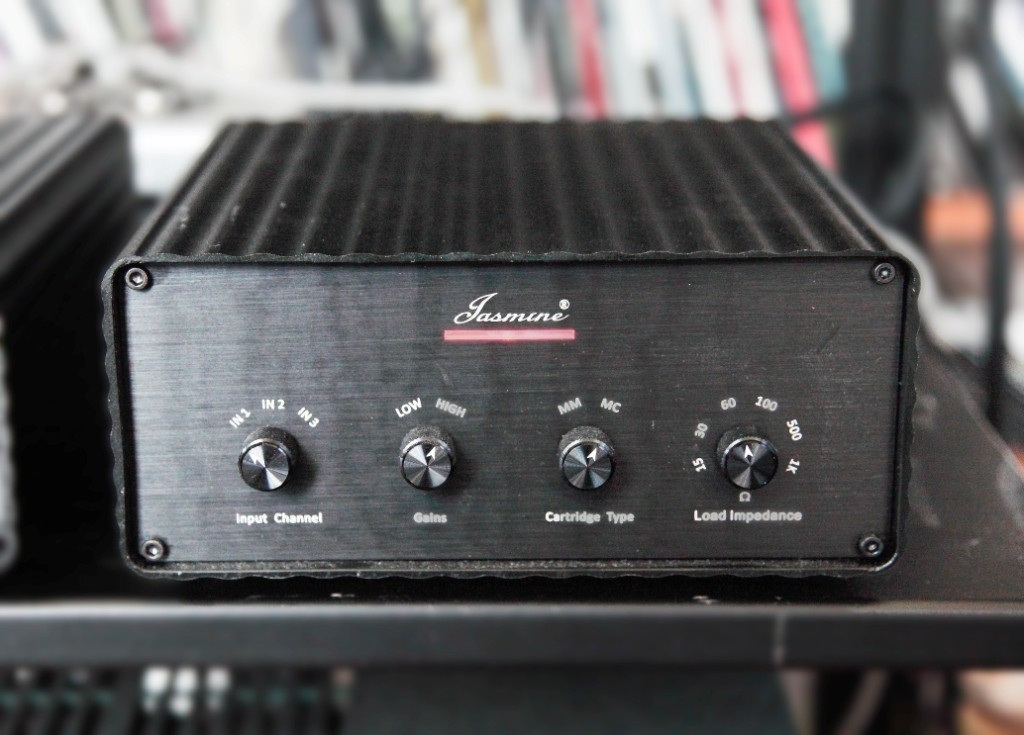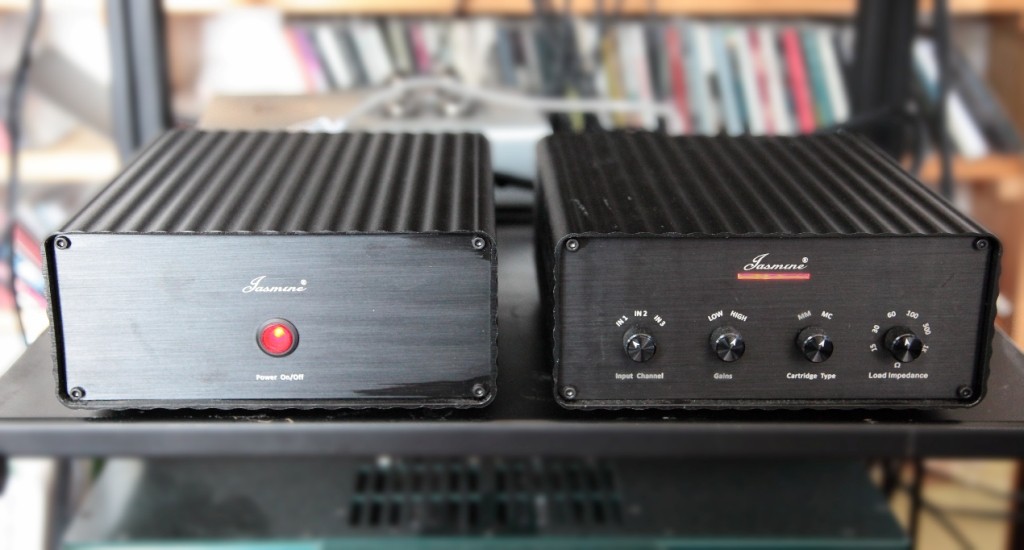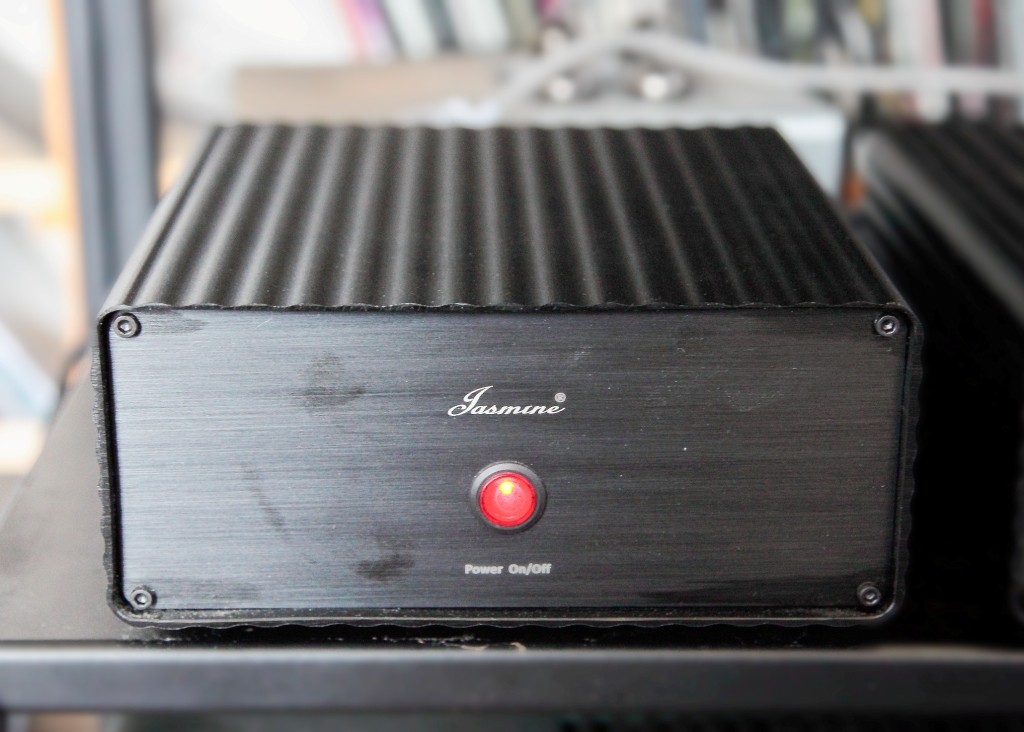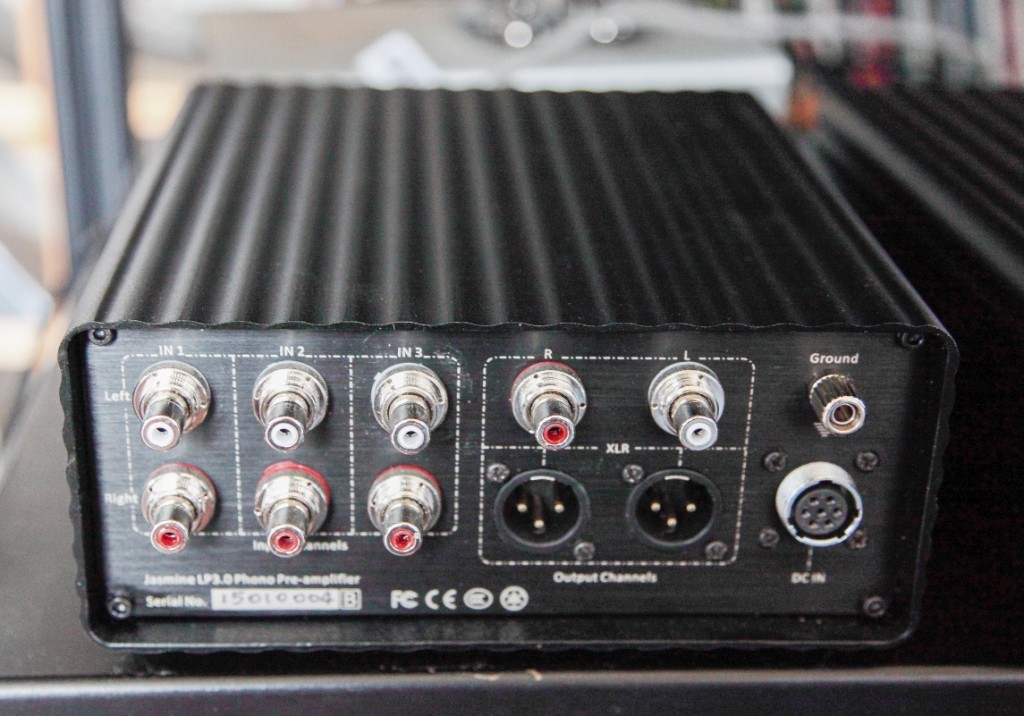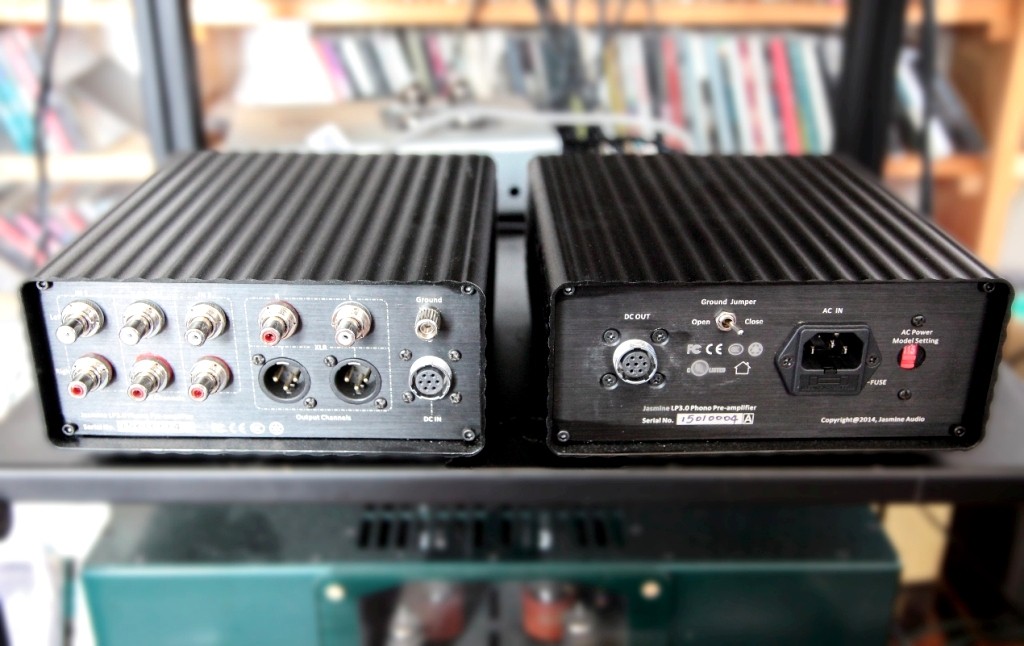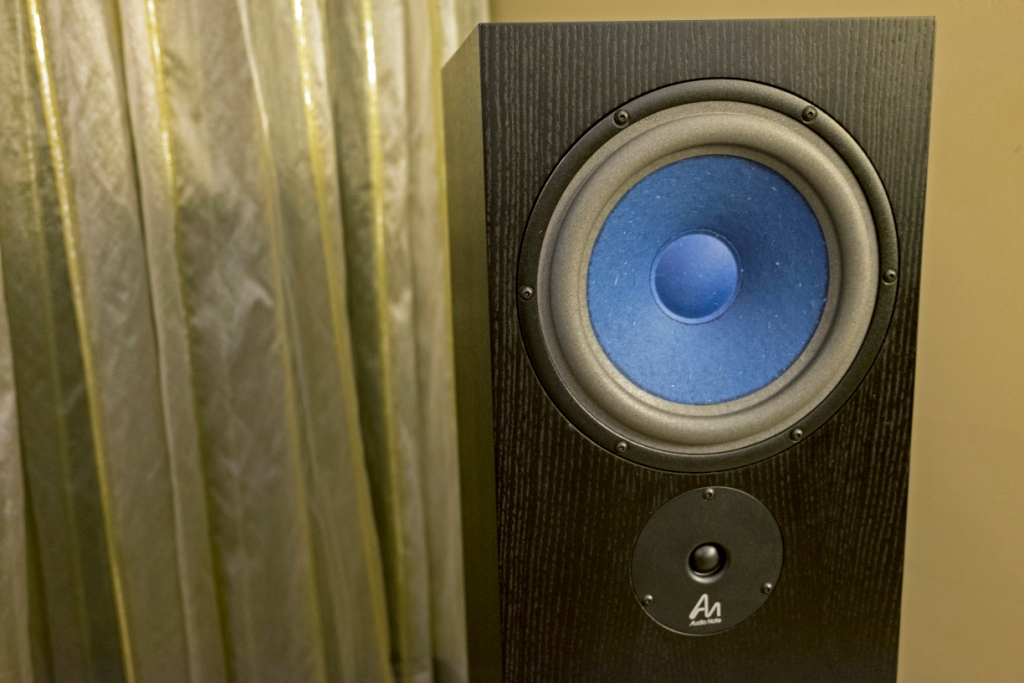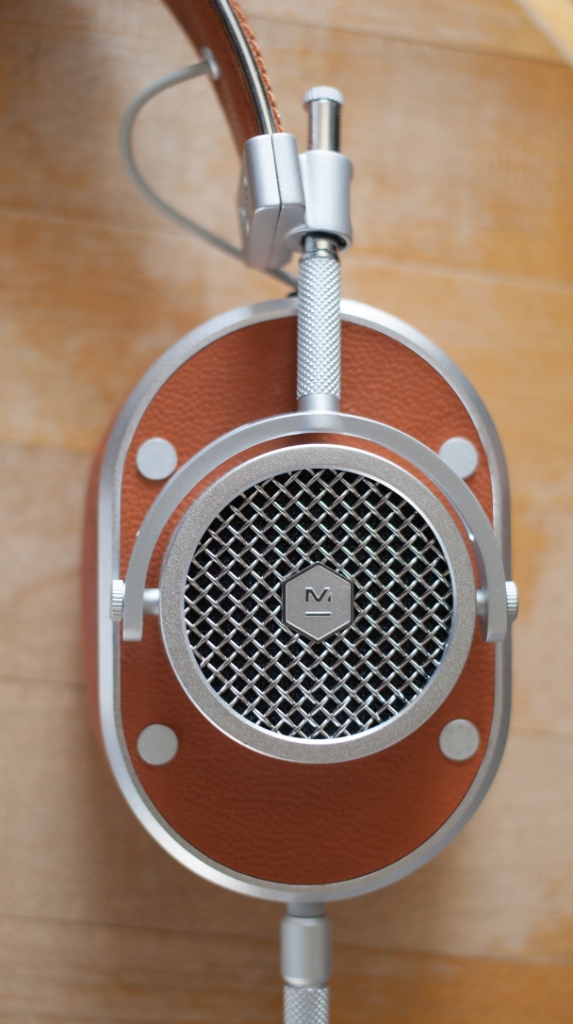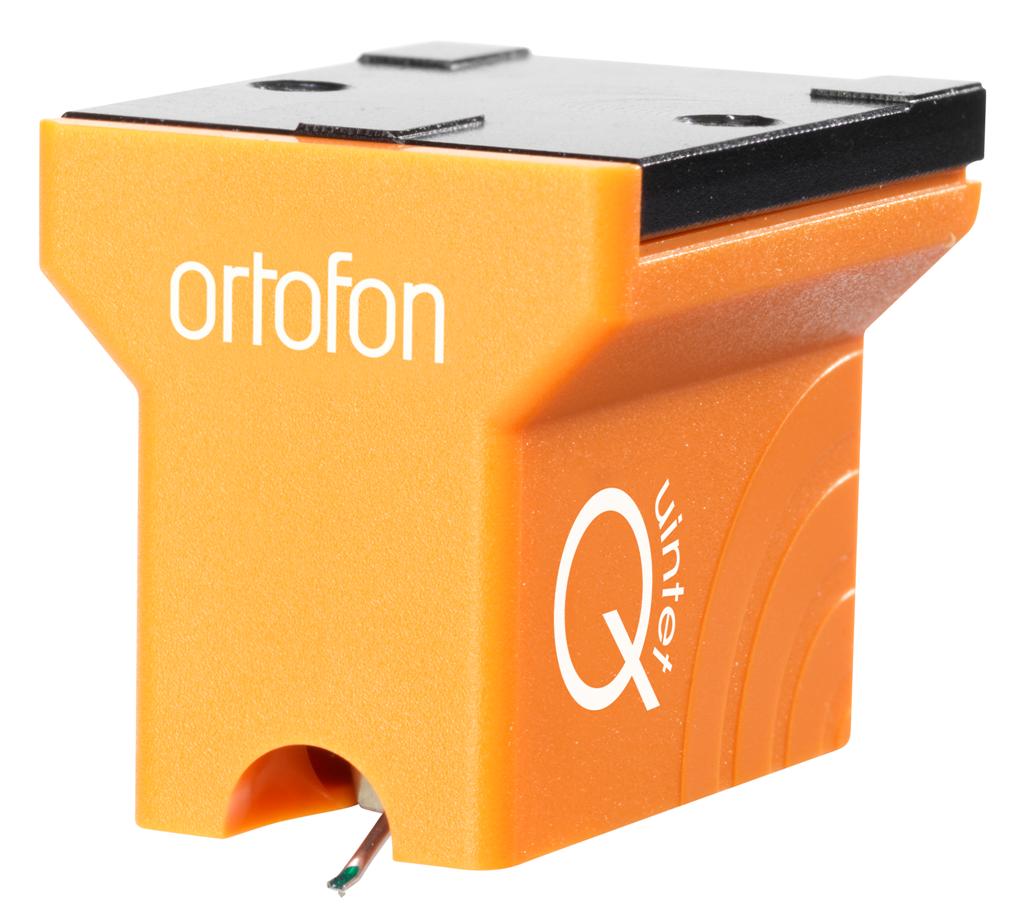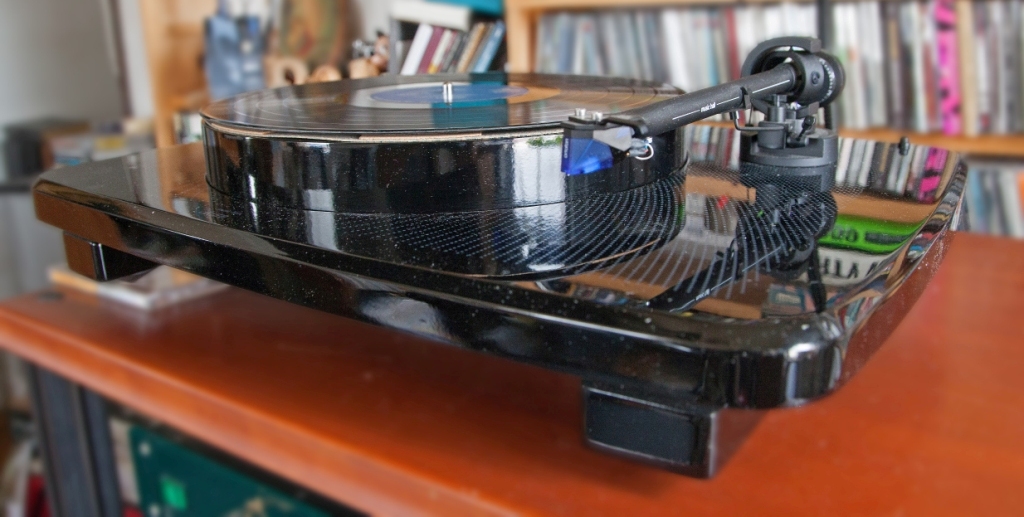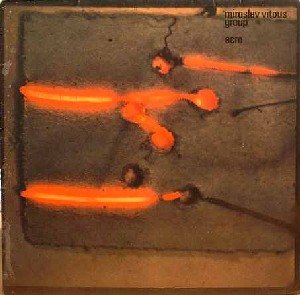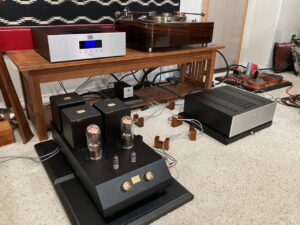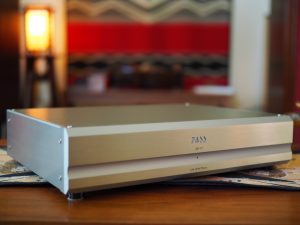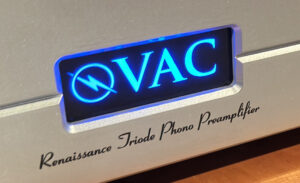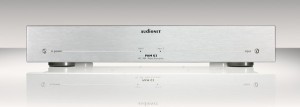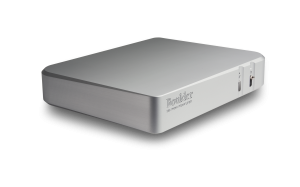Did you know that the sweet jasmine plant is represented by 200 species native to tropical temperate regions of Eurasia, Australasia, and Oceania? Or that jasmine is widely cultivated for the characteristic fragrance of its flowers? I assume you know the latter if not the former. Originating in China, where fragrance, tradition, beauty, and orderliness are deemed of the utmost importance, it's no surprise that Phillip Holmes of Mockingbird Distribution imports the Jasmine line to the US. Phillip too, is a lover of all things scented and sensitive.
Phillip Holmes is the kind of guy you want to deal with when reviewing an audio product. Phillip jumped through multiple hoops and answered every one of my questions when reviewing the Jasmine Audio LP3.0 MM/MC Phono Preamplifier ($980).
A Jasmine by any other name…
Founded in China in 2001, Jasmine Audio Co., Ltd. manufactures tube amps and tube preamps, cartridges, DACs, cables, and a very unusual looking line of full range speakers. Holmes imports the Jasmine Integrated Vinyl Protractor ($165), the Dragon MC Cartridge ($2,800), the Tiger MC Cartridge ($1299, winner of PF's Writers Choice Award), Turtle MC Cartridge ($699), and the LP2 series of phono preamplifiers.
At its $980 MSRP price point, I wouldn't call the LP3.0 inexpensive, but it's in the pocket-friendly neighborhood if this is perchance your first outboard phono stage, as it was mine. And as it was my virgin trip to outboard phono stage land, and considering the bizarre English translations found in Jasmine's user manuals, I asked umpteen questions to set things straight. First, a few specs.
The Jasmine LP3.0 is a two-box affair: power supply and control unit. The LP3.0 features balanced class A output circuitry; "true dual-mono" regulation after the encapsulated EI core transformer; all switching performed by relays (less noise, "better sound than mechanical switches" claims the manual); non-inductive film and copper foil output coupling capacitors; Rhodium-plated RCA jacks soldered directly to the circuit board; three stereo pairs of RCA inputs; RCA/XLR outputs; selectable input impedance: MM=47K ohm, MC=15/30/60/100/500/1K; and adjustable gain -- minimum 45dB, maximum 75dB.
The LP3.0's wave-rolling Bahama Mama outer case is made from extruded aluminum alloy. "The ridges are critical to strength," states Phillip. "They also have other benefits: they allow for cooling, since a case made of this material could be considered a hollow heat sink with a rectangular cross-section; the ridges reduce resonance because they increase strength (higher rigidity makes it less likely to ‘ring')."
The two-box LP3.0 is lightweight and easy to locate on any standard audio rack, but pray tell, do not stack them! When I did so they produced a low level but consistently annoying hum. The front panel of the control unit includes a three-position selector switch labeled "M1," "M2," "M3," a "low" and "high" gain switch, a cartridge type selector knob, and the fun button: a "load impedance" switch stepped from 0 to 15, 30, 60, 100, and 1K. The units' black aluminum casings stayed cool to the touch throughout my reviewing period.
The Jasmine LP3.0's manual contains such translation humdingers as "Don't directly connect the stage's output to any power amplifier, too large volume maybe burn down your speakers." And "Please turn down volume… to avoid the bang bang noise from speakers."
Totally understandable, of course. Though you'd think the flush Chinese would pay for a English translator when exporting audio gear. Anyway, my questions were many given my relative inexperience with outboard phono stages, cartridge loading, and ohmage selection. The Ortofon Bronze Quintet cart (in for review) specifies a 20 ohm load. "Should I adjust the 15 to 30 settings? Also, gain should be high or low setting?"
Ultimately, I found different ohm settings to work better with different recordings. With some LPs (not "vinyls"!), the lower ohm rating increased lower end punch and warmth; with higher settings, a sweetening effect or a shimmer with slightly better resolution.
Re the gain switch Phillip explained, "It controls relays on the board that either changes loading resistors, or adds bypass capacitors to the source load resistors of the JFets, or it adds an additional gain stage.
"BTW, when I say ‘loading resistors,'" he added, "I'm not talking about cartridge loading. The output of the JFet has a load resistor that affects gain, somewhat. Changing that resistors also affects noise and distortion of the JFet, so one way, or the other, will sound purer, in an absolute sense. But, if you don't have enough gain, then purity can be self-defeating.
Some people will disagree (they are 100% wrong), but the electrical load from the preamp (talking about cartridge loading, whether resistors or transformers) causes the cartridge to track differently as the load is changed. When you turn on the lights on a car, it presents a very large load of only a few ohms, which causes the alternator to work harder. That causes the alternator to resist the pull of the belt. Similarly, when you increase the load on a cartridge (make the loading numerically smaller), it tends to damp the cartridge, which makes it ‘warmer.' Taken to extremes, I think it can cause mistracking (either loaded way too high or way too low). In a narrow range, the cartridge tracks well for a certain tracking force, with the tonal balance changing some."
And that annoying hum when stacking units?
"Don't stack the units," wrote Phillip. "That's why the power supply is detached. Transformers will couple their EMI through aluminum into the signal electronics. Not a problem with line stages and power amps, but a big problem for phono stages.
"The low noise JFets in the Jasmine are a two-edged sword," he added. "They have lower noise than any tube, since they don't suffer from microphonics, and their noise is in nV (nanovolts). They have vanishingly low distortion, and almost all low ordered harmonic distortion at that. So, they don't sweeten the sound, at all. And there's almost no noise to cover up details. You'll hear some records become better, and others get worse, some annoyingly so. The best thing I can say is that it doesn't make all records sound the same (which I found to be absolutely true), so I think it is honest. I sell a very expensive tubed phono stage, and it makes everything sound sweeter and brighter than the Jasmine. Going back and forth, it's the Jasmine, at 1/6th the price, that's the honest one. However, I have friends and customers that like sweetener in their music. The customer is always right. It's their money."
With the tech talk out of the way I settled into the Jasmine LP3.0's sound. After a burn-in period where the Jasmine went from hard to flat to really hard to a bit bloomy, I felt I heard its true character, and in comparison to the tube phono stage of my Shindo Allegro preamp.
Swinging with Miss Cott
Along with Coltrane, Wayne Shorter, Joe Henderson, Gene Ammons, Eddie "Lockjaw" Davis, and Johnny Griffin, I am a huge fan of tenor saxophonist Stanley Turrentine, and his work on Blue Note. As with the Prestige recordings by his then wife, organist Shirley Scott, when I see a Mr. T album, I buy it. At this point I have them all, but am always looking for a better pressing as long as "RVG" is in the deadwax. Turrentine never blew tenor with the ferocity or innovative creativity of the afore-mentioned tenor players (excepting Ammons), but he brought soulfulness and drive to every recording. And his quartets are uniformly excellent.
It's hard to make a "RVG" Turrentine disc sound bad, and the Jasmine LP3.0 didn't surprise me in that regard. Turrentine's Dearly Beloved (early ‘70s Liberty Blue Note reissue (BST 84081)) is unusual in that for once the organist isn't Shirley Scott, but one "Little Miss Cott" (a Scott alias perhaps), with Roy Brooks on drums. With no bassist, one can really hear the B3's organ pedals emitting some seriously volcanic bass notes.
One of the Jasmine's sonic traits was evident immediately and never changed: a great ability to resolve every iota of detail from LPs. The Jasmine's rendition of Dearly Beloved was decently warm and very detailed but never forward or etched, which I attribute to the extremely smooth-sounding Ortofon Quintet Bronze cartridge. The Jasmine relayed the smoothness and ease that are the Bronze Quintet's signatures. The Jasmine fully resolved the incredible low notes of Ms. Cott's organ pedals, only losing its grip when the notes loomed large and long. Mr. T's music popped and flew, Roy Brooks' drums kicked with good decay and plenty of PRaT. When the music hit crescendos or became extremely loud the Jasmine could sound forced and somewhat hard, but with excellent resolution and decent layering of the LP's soundstage. My short room prevents true depth, but the Jasmine worked wonders, especially with drums.
Wagnerian thrusts
Though I'm not a classical aficionado I do have a goodly collection of orchestral LPs by all the major composers and conductors. The sampler EMI/RCA LP, The Rare Wagner (ASD 2837), is an outstanding 1972 primer of all things Wagner, with the London Symphony Orchestra conducted by Marek Janowski. The "Liebesverbot" Overture features a slowly building dynamic introduction, with gargantuan sonic leaps and bold percussion accents providing an exceptionally thrilling experience.
Once again, the Jasmine retrieved gobs of orchestral detail including explosive bass drums and delicately ringing bells. I felt I heard the full breadth and dynamics of this very stirring performance, both micro and macro dynamics revealed, and with no smudging of inner detail when things got hot and powerful. Enormous crescendos became hard at times, yet with no loss of resolution. Again, upper register transients could sound hard, but the unit's powerful rendition of bass notes balanced the overall presentation. The Jasmine always revealed a fine musical line, its ability to cast a wide soundstage with great dynamics and detail its supreme suite.
Riffing for Stravinsky
Yearning for more classical riffage, I played Stravinsky's The Rite of Spring performed by Antal Dorati and the Minneapolis Symphony, Mercury Living Presence LP (SR90253). The Jasmine relayed all the incredible nuance and detail of the piece with excellent resolution that once again, only grew hard when the symphony thundered and BPMs were racing. Deep bass notes plunged, the famous 1/8th note figure sounding appropriately revolutionary and chaotic. The Jasmine is a dynamics king, extremely fast with rock solid bass delivery.
Enter Shindo Allegro
Wiring my Kuzma Stogi Stabi into the Shindo Allegro's tube phono stage reaped fantastically different results, as might be expected from a preamp with a ten times greater price tag than the Jasmine LP3.0. The Rite of Spring sounded larger, more dynamic, with better overall warmth, texture and perhaps most markedly, tone, than that of the solid state Jasmine. But then, I have heard very few preamps match the Shindo for pure tone and texture. Everything sounded bigger, down to individual instruments within the soundstage via the Shindo. Every instrument took on greater flesh and blood, and greater urgency. The Shindo didn't outperform the Jasmine in terms of dynamics, but held a considerable edge in detail retrieval. There was generally more air, with better channel separation and presence and a greater sense of musical wholeness. The same could be said of the Wagner LP in all regards. And of course, the Blue Note disc was warmer, fatter, tonally truer, and bigger, if dynamically similar as when played through the Jasmine.
Perhaps it's not a fair match, the Shindo vs. Jasmine, but the Jasmine acquitted itself well, nonetheless. When listening to the Jasmine I felt nothing was missing, and its special talents at retrieving detail and rending large scale punching dynamics were consistently impressive.
DIY City?
"The Shindo has really good NOS parts, most of which cannot be matched by today's boutique audiophile junk," Phillip Holmes correctly noted. "The Jasmine lp2.5du (not the unit under review, but Jasmine's oldest continuously developed product), , is very easy to modify. I've been rebuilding those (for about six years), , and stuffing them with Vitamin Q, Russian types, bulk z foil, wirewound, and hand-matched new transistors, and every passive part to better than .5% (usually better). I polish all the leads with .0000 steel wool. I usually coat everything with wax after I'm finished. Surface oxidation on the component leads seriously degrades the sound. When I'm through, it sounds nothing like the stock unit. It doesn't even sound like a transistor unit, or a tubed unit. But it takes hours to do the job (parts selection and preparation). I'm sure the Shindo is even harder to do. (To get any production type product to the level of the Shindo--it's a lot of matching, listening, parts preparation, etc..; that's why there is such a big difference in price between a unit like the Jasmine LP3.0, and the Shindo).
"That's the difference between ‘regular production' and ‘bespoke,' I guess," he added. "If someone is going to spend ten hours selecting and preparing expensive NOS parts, it should sound better, and will be more expensive. In the case of the Jasmine you have, it has a lot of functionality, transparency and is affordable. Hopefully buyers will understand that to get the next 10%, they'll run into the law of diminishing returns, quickly."
Coming up roses
None of my criticisms are meant to sell the Jasmine LP3.0 short. This handsome, tidy, well thought-out and easily adjustable unit provides rock solid bass retrieval and overall bass rendering commensurate with more expensive solid state units. The Jasmine creates palatable images, and is a true champ at caputuring detail, resolution, and dynamics. I was consistently caught up in the Jasmine's powerful dynamics, micro and macro resolution, and perhaps most importantly, its ability to let me fully enjoy every LP put to it. When you add in its fast start-up time and powerful demeanor (and I didn't even experiment with power cords), the Jasmine LP3.0 is a solid state phone stage that easily lives up to its fragrant, flowing, and orderly namesake.
Jasmine LP3.0 MM/MC Phono Preamplifier
Retail: $980
North American Importer of Jasmine
http://mockingbirddistribution.com
Jasmine Audio




